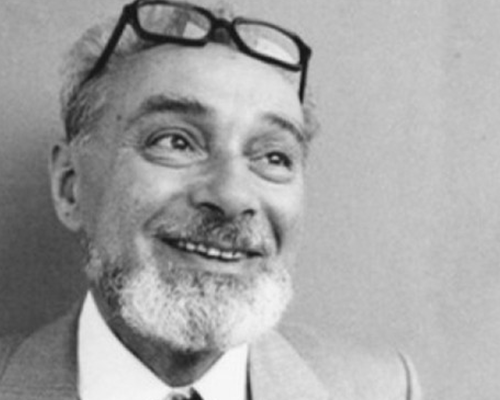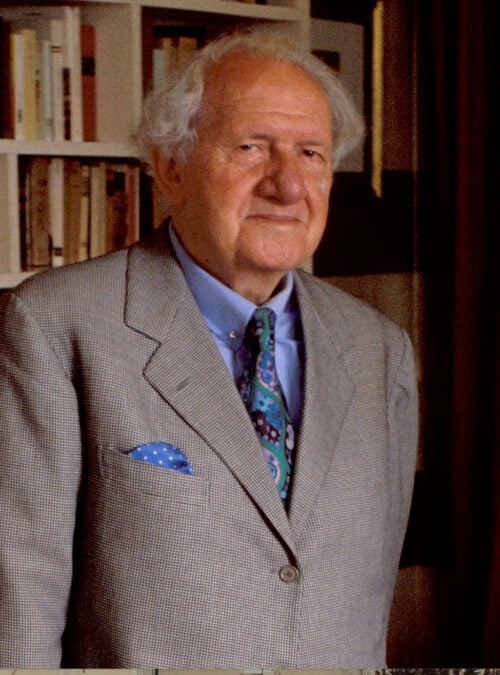Primo Levi in other languages

Today Primo Levi is read worldwide. Translated in almost fifty languages and recognised as the most limpid voice of Auschwitz, rich in imperative solicitations: for this reason, capable of overcoming barriers amongst different generations and of speaking to the many who, within cultural contexts so far apart, suffer serious traumas instigated by war and mass violence.
In the vast majority of cases, the reception of the work has repeated the path it took in Italy. Initially, the first books to be translated were about the concentration camps and the adventurous return home (If this is a man and The Truce). After came the crucial date 1984, when the first version of The Period Table was released in the USA and discovered for its intertwined autobiography with chemistry and literature; this such discovery gave a strong impetus to the author’s fame in the English-speaking world and beyond. Later on, The Wrench, If Not Now, When? the poems etc. were approached and there was a special penchant for The Drowned and Found, a reflection on the most unsettling and paradoxical aspects of the extermination; the science-fiction stories only came after. The awareness that Levi was a great writer who dealt with crucial issues concerning today’s world was established slowly, hindered by the prevailing idea that he was essentially a Lager witness; but, where publisher and the public came to mature this conviction, the Primo Levi testimony was appreciated to a much larger extent.
An overall picture may benefit from some special annotations. Firstly, the care with which the author – who also translated works such as The Trial by Kafka or the written works of Lévi-Strauss – payed attention to the first release of If This Is A Man, especially in English and in German, discussing moment by moment the translators’ work. Such was the value he attached to a widespread knowledge of Lagers and to a dialogue with post-war Germany.
He followed the English translation, released by Orion Press in 1959, every step of the way, discussing each page with the translator Stuart Woolf. For the German translation he found the perfect interlocutor in his contemporary, Hans Riedt, an expert in Italian literature and a partisan in Italy during the Resistance against Nazi fascists. This was perhaps the most demanding task because the author particularly cared to be understood by the German interlocutors and wanted the real language of the Lager to be reported to them – a hard jargon of the barracks -, which was, for the most part, unknown to the general public.
Widening the view towards a broader horizon, specific peculiarities depending on the history of various States should be observed. For example, countries in the communist bloc – from Russia, Poland to eastern European states – learned very late of Levi, due to the difficulty in that context to clearly and explicitly face the events of the anti-Semitic persecutions: suffice it to say, in the area of the former Yugoslavia, the main works regarding Lagers were released at the start of the 90s, when the country was disintegrating and, therefore, the attention to a remoter past was very scarce.
In France the circulation of Levi’s works was delayed by a poor translation of the first book, If This Is A Man, which was published to the author’s great displeasure. In the United States, where his first-born book was already present in English since the 60s, – as seen – his fame only took a great leap with the publication of The Periodic Table: that’s like saying the writer and the chemist arrived before the witness. In Israel, Levi’s books were welcomed with some delay and The Truce was translated before If This Is A Man. In Japan, Portugal and Brazil his work was gradually translated almost in its entirety. In Argentina the strong presence of Jews who had emigrated from Italy and the desaparecidos event played an important role in promoting the dissemination. That’s only to cite some of the most evident information.
It is a fact in any case that the study of Levi’s luck in various countries is a particularly interesting area of research that has already yielded significant contributions and must deal with some data of unquestionable novelty. The persistence and the growth in interest towards the writer from Turin became, with the passing of time, an essential point of reference for contemporary Italian culture and was confirmed by the countless initiatives undertaken worldwide to mark the centenary of his birth. The publication in 2015 by Liveright Publishing Corporation in New York of the complete works into English – the only integral revival of an Italian author into another language – is destined to weigh in the long-term in the broad cultural universe. The rapid succession of translations into Chinese and other Asian languages of recent years will furthermore mark the author’s success in the near future.
It is worth making some further comments on the recent American translation. Robert Weil, who was key to the operation, had to resolve the first problem, common in countries where many of Levi’s works were translated over the course of time: meaning, he was obliged to invest great energy in the attempt to acquire the Rights from the several publishers through which the various works had been disseminated. He then took care to make the translation of the work homogeneous as a whole, relying on translators who were called in to retranslate everything, whilst guaranteeing adequate coordination of the editor Ann Goldstein.
The result was undoubtedly excellent, also because it offered Levi’s work in its entirety, beyond the distinctions and preferences of the past and to a very wide section of the public. He is no longer recognised as a witness and then a writer but as an organic corpus of writings that can be followed in their development and that, at the same time, offer allusive interpretations useful in grasping its treasure.
The American translation itself evidently shows how the writer from Turin succeeds in a complex and versatile theme and style which, in that form, has become a necessary presence within the international contemporary cultural context.










